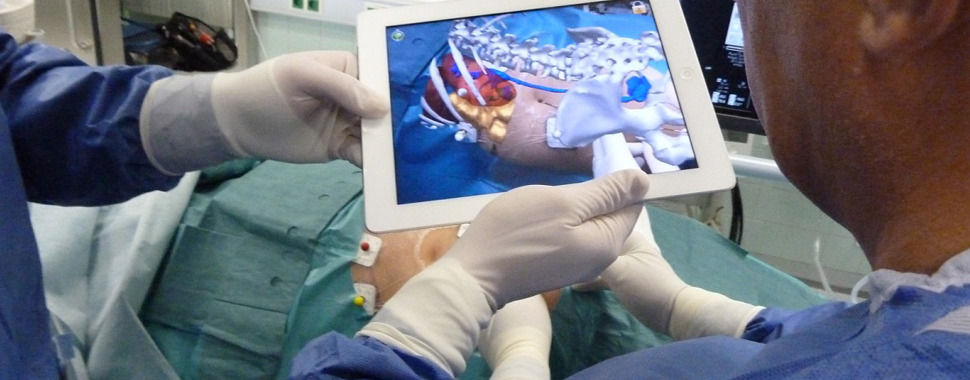
Augmented reality (AR) is being used in healthcare to provide patients with an immersive experience that can aid in their recovery. AR applications in healthcare can be used for a variety of purposes, including education, Entertainment, and rehabilitation. In this blog post, we'll explore some of how AR is being used in healthcare and the potential benefits it offers.

What is Augmented Reality (AR)?
Augmented reality (AR) is a technology that overlays digital information on top of the real world. This can be done in several ways, but the most common is through the use of AR devices such as smartphones or glasses. This digital information can be anything from text to 3D images, and it can be used for a variety of purposes such as navigation, gaming, and even education.
AR has been around for a few years now, but it is only recently that the technology has begun to gain mainstream attention. This is due in part to the release of AR devices such as the Microsoft HoloLens and the Google Glass. As AR devices become more common, we are likely to see more and more applications for this technology.
What are the benefits of AR in healthcare?
AR (augmented reality) is a technology that has been gaining traction in recent years. AR allows users to superimpose digital information on the real world, and it has a wide range of potential applications. One industry that is beginning to explore the use of AR in healthcare.
There are many potential benefits of using AR in healthcare. For example, AR could be used to help surgeons plan complex procedures, provide real-time patient data to doctors, or even allow patients to see inside their own bodies. AR has the potential to revolutionize the way we provide healthcare, and it is already beginning to change the way some hospitals operate.
How is AR being used in healthcare?
AR (augmented reality) is a technology that superimposes digital information in the real world. AR has a variety of applications in healthcare, from training and education to patient care and surgical procedures.
One of the most popular uses of AR in healthcare is Anatomy AR. This app allows users to view and manipulate 3D models of human anatomy. It can be used by medical students to gain a better understanding of the human body, or by surgeons to plan complex procedures.
Another popular use of AR in healthcare is in the field of medical education. AR can be used to create simulations of medical procedures, which can be used to train future doctors and nurses. AR can also be used to create educational content for patients. For example, AR can be used to show patients how their medications work or to explain what a certain medical procedure will entail.
What are the challenges of using AR in healthcare?
AR has the potential to revolutionize healthcare, but there are still some challenges that need to be addressed before it can be fully adopted in this field. One of the biggest challenges is data privacy and security. AR applications have access to a lot of sensitive patient data, which means that strict security measures need to be in place to protect this data. Another challenge is the cost of developing and deploying AR applications. Healthcare is a notoriously cost-sensitive industry, so AR applications need to be affordable to be adopted on a wide scale.
Despite these challenges, AR holds a lot of promise for healthcare. With the right precautions in place, AR could transform the way we provide and receive healthcare.












